If Andy Warhol took the world by storm with his major exhibitions and paintings depicting the waste and food of the consumer world — from Coca-Cola cans to soup cans lying on the streets of New York — in the late sixties and seventies, today — in the summer of 2021 — he shows up with these paintings in the capital of the country and the government that, at the beginning of its establishment, was adamantly against pop art, seeing it as a vulgar art form.
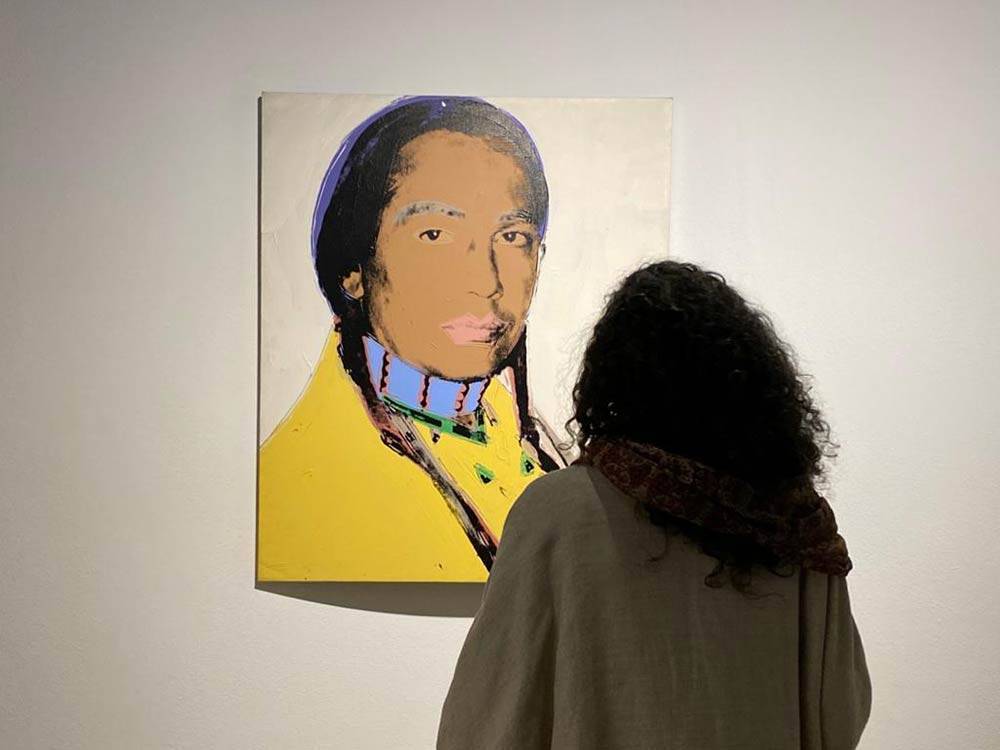 Andy Warhol art in Tehran Museum
Andy Warhol art in Tehran Museum
Did Warhol ever imagine something like this happening? It was he who came in the seventies (1976) at the invitation of the Iranian ambassador to the United Nations to create a portrait of Farah Pahlavi, the wife of the Shah of Iran. Whereas today, he pops up in Islamic Tehran to display his artwork, and young people thirsty for art can visit the Museum of Contemporary Art in the capital to see his art pieces and installations.
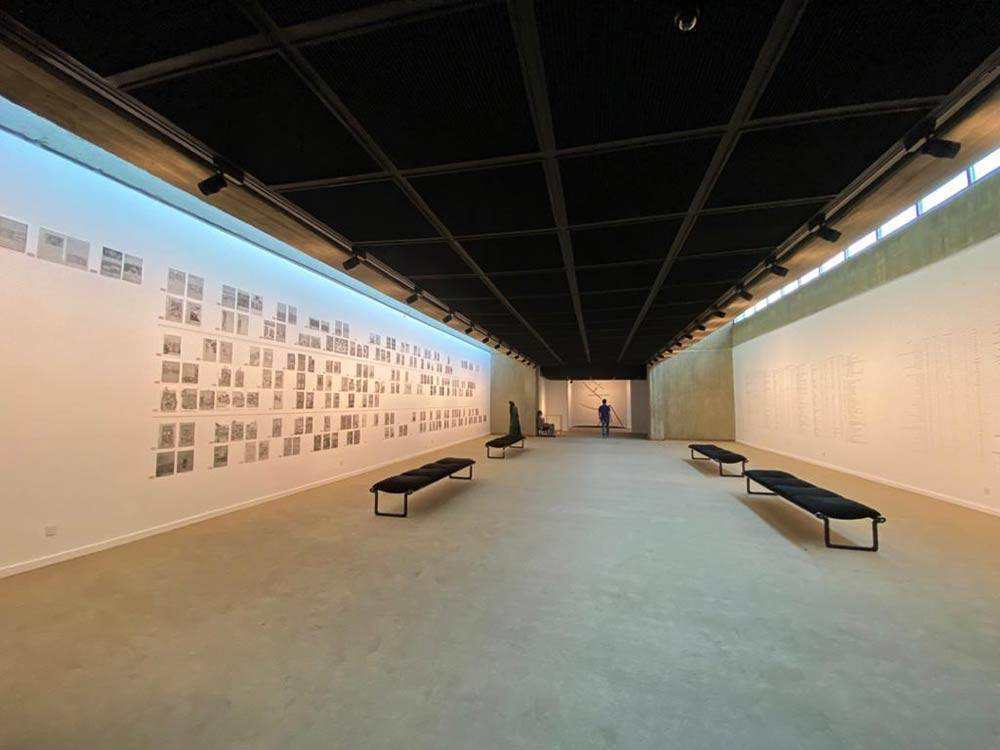 Andy Warhol art in Tehran Museum
Andy Warhol art in Tehran Museum
Much of Warhol’s work revolves around celebrity portraits and modern-day consumer merchandise. His art with Coca-Cola cans, American money, and canned food is reflected in the faces of Mao Zedong, the Chinese Communist leader, Marilyn Monroe, and even Farah Pahlavi, the wife of Mohammad Reza, the Shah of Iran.
Warhol visited Tehran in 1976 at the invitation of the Iranian ambassador to the United Nations to create a portrait of Empress Farah Pahlavi, the wife of the Shah of Iran.
In addition to the paintings of Farah’s face, whose fate is not known, the exhibition revealed seven works by Warhol ranging from regular portraits to other images, including 28 paintings in total, in addition to a continuous screening of his movie “Eat”, showing the simple act of a young man eating shrooms (psychedelic mushrooms). The man featured in the film is the American pop artist, Robert Indiana.
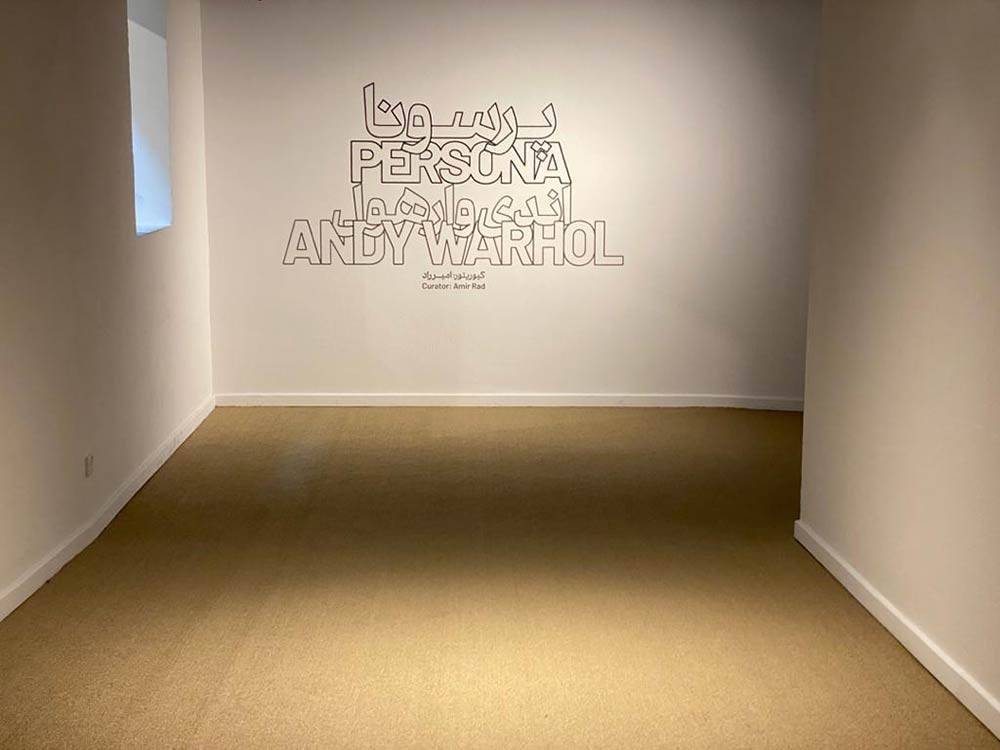 Andy Warhol art in Tehran Museum
Andy Warhol art in Tehran Museum
The exhibition, which launched in Tehran on June 15 and kept its doors open until July 25, was entitled “Persona”. Speaking on the reason for giving the exhibition such a name, Amir Rad, the exhibition’s curator, said that these works reflect the plurality of Andy Warhol’s different personalities. “Persona” as a concept is an image of ourselves under different circumstances, as if we wear different masks when we are in different locations and circumstances.
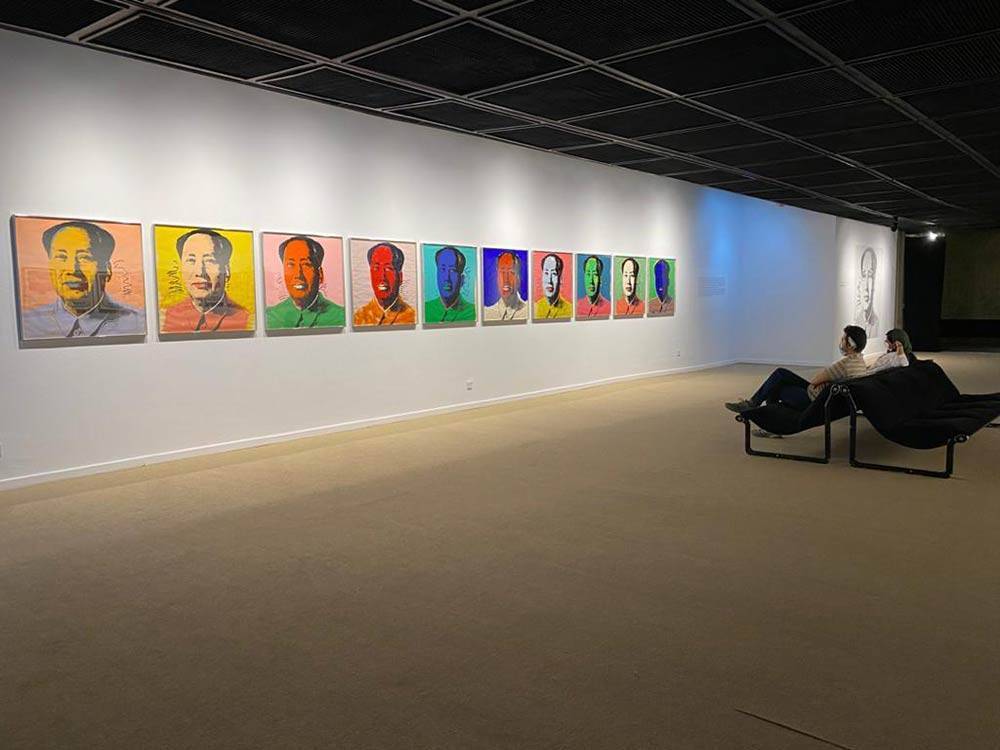 Andy Warhol art in Tehran Museum
Andy Warhol art in Tehran Museum
Rad asserted, “We, in this exhibition, which for the first time displays all of Warhol’s works in the Museum of Contemporary Art in Tehran, are trying to interpret the work of this artist in a different way in order to explore his reality through these characters, personalities, and masks; a reading and an interpretation that helps us understand a different image of him by leaving the previous layers of knowledge that we had become accustomed to rely on in our understanding of Warhol’s character.”
Andy Warhol
Andrew Warhola, who later changed his name to Andy Warhol, was born in 1928 in the city of Pittsburgh, Pennsylvania, to parents who had immigrated to the United States from Slovakia. He studied fine arts BFA (acquired a Bachelor of Fine Arts) there, and moved to New York in 1949, where he began working as an advertising designer and illustrator for Vogue and Harper’s Bazaar.
Warhol ended his advertising career in 1962 and devoted his time to artistic creativity until his death in 1987, after his spirit was left weighed down by the grief that afflicted him following an assassination attempt in 1968. The attempt on his life took place while he was at the height of his artistic fame, when Valerie Solanas, the radical feminist playwright and author, shot at him in his studio — the Factory — three times and hit him on the third shot. This incident was later documented in a 1996 American-British film “I Shot Andy Warhol” about the life of Valerie Solanas and her relationship with Andy Warhol.
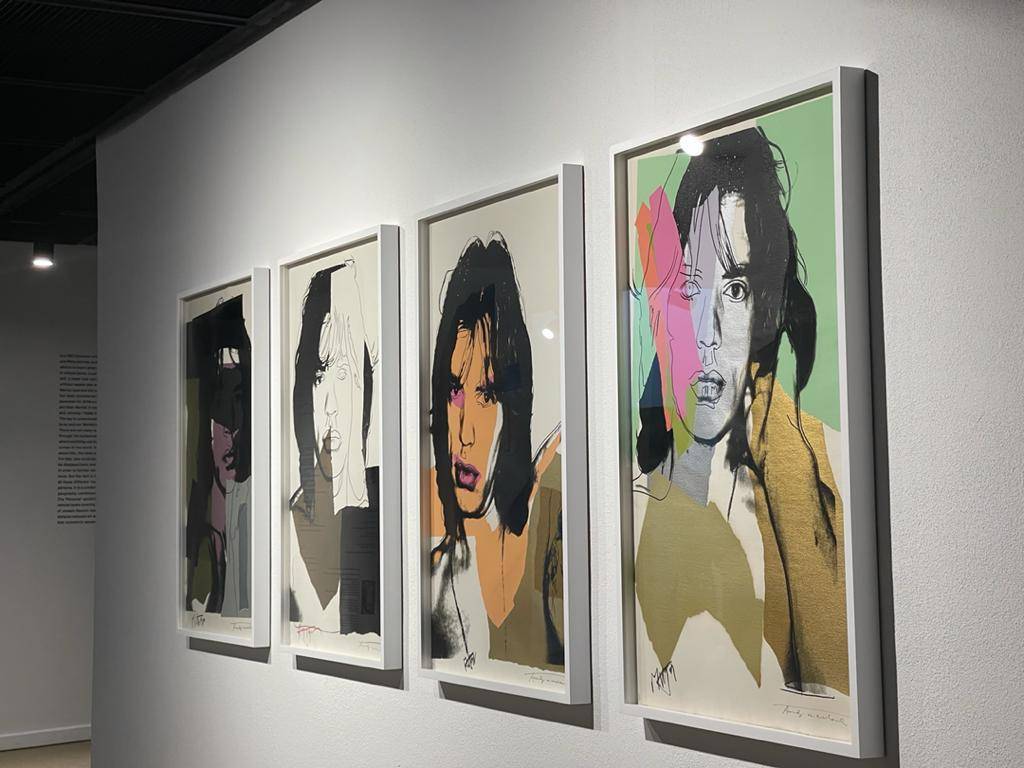 Andy Warhol art in Tehran Museum
Andy Warhol art in Tehran Museum
In an interview with the BBC, the American writer who accompanied Warhol on his travels to Iran, Bob Colacello, says that his portrait of Farah Pahlavi is one of Warhol’s finest works.
He adds, “Warhol was able to catch a certain kind of magic, charm and sadness in Farah’s eyes. It is not entirely clear how many of these portraits were printed by Warhol. I always think that they were 14 paintings. He gave 6 to 8 of them to the queen, and he himself did not know how many of them remained in the basement of the Museum of Contemporary Art in Tehran. Two of these paintings can be seen in the Casa Lure Museum in New York hanging on the wall alongside paintings featuring Dolly Parton, Dennis Hopper, and Alfred Hitchcock.”
Building the Museum
As Farah Pahlavi mentioned in a previous interview of hers, the idea for this museum came from the Iranian contemporary artist Iran Darroudi, who told the Queen of Iran during an art exhibition something along the lines of ‘we need a place to display our work’. Farah’s response was, “What a good idea! We should build a museum.” Not long after that, the construction of the Museum of Contemporary Art began by the Iranian architect Kamran Diba at the request of Farah Pahlavi.
It is said that the basement of Tehran’s museum houses a large collection of contemporary works by different artists from around the world valued at over $3,000,000,000.
At first, Farah Pahlavi wanted to buy Iranian antiquities scattered across the world to collect them and place them in this museum. But she soon changed her mind after she saw that buying these antiquities would cost too much, and in return, modern artworks were much cheaper and easier to access.
For decades, dust has covered the treasures that lie within and beneath the Museum of Contemporary Art in Tehran. In recent years, officials have decided to wipe the dust off some of them due to the restoration work that is taking place in the museum, which for its part, is a place worth visiting purely for the art in its architecture.
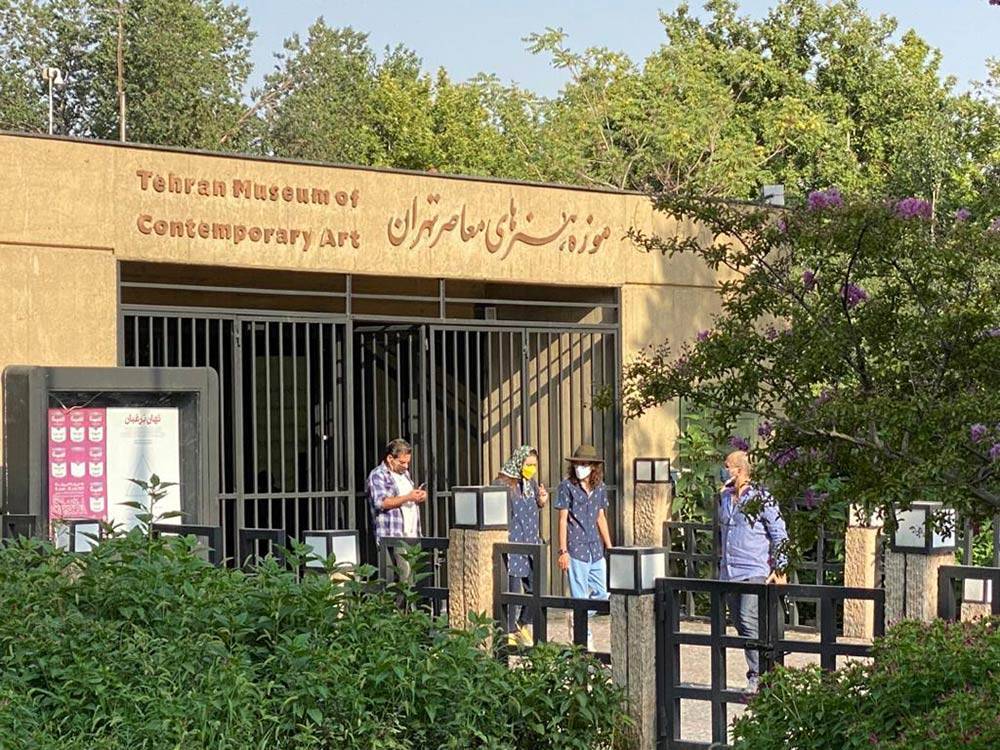 Andy Warhol art in Tehran Museum
Andy Warhol art in Tehran Museum
It is said that the basement of this museum houses a large collection of artworks relevant to contemporary art by different artists from around the world and estimated to be worth three billion dollars. They include works of art by Francis Coppola, Alberto Giacometti, Pablo Picasso, Jackson Pollock, Mark Rothko, Pierre-Auguste Renoir (Auguste Renoir), and René Magritte.
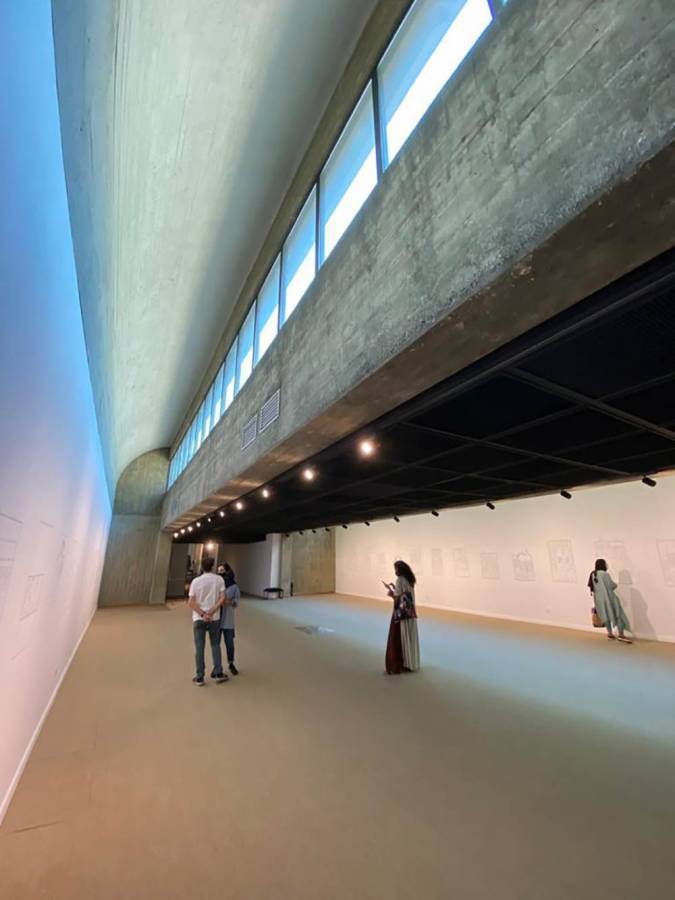 Andy Warhol art in Tehran Museum
Andy Warhol art in Tehran Museum
* The photos here in this article are the product of a visit Raseef22 paid to this exhibition in the Iranian capital, Tehran.
Raseef22 is a not for profit entity. Our focus is on quality journalism. Every contribution to the NasRaseef membership goes directly towards journalism production. We stand independent, not accepting corporate sponsorships, sponsored content or political funding.
Support our mission to keep Raseef22 available to all readers by clicking here!
Interested in writing with us? Check our pitch process here!
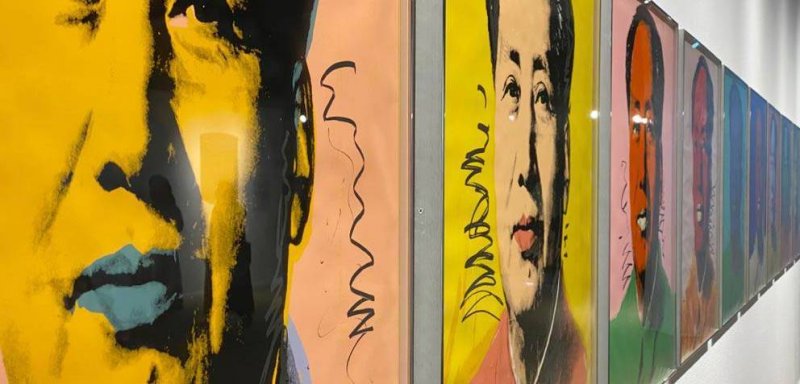
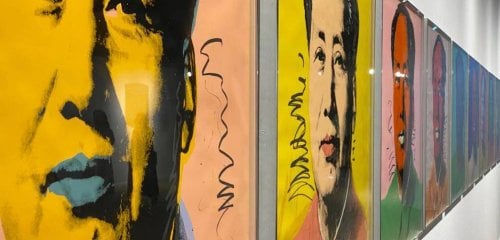



Join the Conversation
ذوالفقار عباس -
2 hours agoا
Hossam Sami -
3 hours agoصعود "أحزاب اليمين" نتيجة طبيعية جداً لرفض البعض; وعددهم ليس بالقليل أبداً. لفكرة الإندماج بل...
Anonymous user -
1 day agoرائع و عظيم ..
جيسيكا ملو فالنتاين -
5 days agoزاوية الموضوع لطيفة وتستحق التفكير إلا أنك حجبت عن المرأة أدوارا مهمة تلعبها في العائلة والمجتمع...
Bosaina Sharba -
1 week agoحلو الAudio
شكرا لالكن
رومان حداد -
1 week agoالتحليل عميق، رغم بساطته، شفاف كروح وممتلء كعقل، سأشاهد الفيلم ولكن ما أخشاه أن يكون التحليل أعمق...